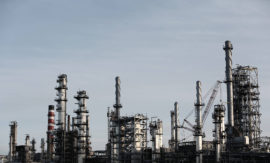Intended learning outcomes: Disclose the production of collets from a steel cylinder as well as the “saucepan and lid” problem linked with temporary assembly.
Continuation from previous subsection (8.1.1b).
The third example shows the production of split steel collets, which are used for tool holding and disengaging. Figure 8.1.1.5 shows a typical production process that yields a number of different sizes of collets. Here, reasons of economy dictate the production of by-products.
Fig. 8.1.1.5 Production of collets from a steel cylinder.
Collets S1, S2,…, Sn, each of different diameter d1, d2,…, dn, can be produced from a round bar M of diameter D. Here, again, the decision to produce by-products is based on economy. Once production has been set up, collets of various diameters can be produced with negligibly short setup times. Since various collet diameters are produced together, the possible batch size is relatively large. This minimizes the share of setup for each collet. At the same time, only a few collets of each size are produced, which keeps down the carrying cost for each size and for production as a whole. Figure 8.1.1.6 shows the flow of goods for collet production.
Fig. 8.1.1.6 Production of collets from a steel cylinder.
The fourth and last example is temporary assembly, taken from the manufacture of precision machines. Here, components at low production structure levels may have to be put together for mutual adjustment, disassembled again, and sent on for further processing. At the latest at final assembly, the fitted components are rejoined. This is the typical “saucepan and lid” problem, as formally shown in Figure 8.1.1.7. The saucepan and the lid have to be produced at the same time since they have to be matched to each other. However, they may then pass through other, quite different orders before they are finally assembled.
Fig. 8.1.1.7 Temporary assembly: the “saucepan and lid” problem.
There are thus a number of reasons for producing by-products in the process industries. In many cases, the reason lies in the nature of the chemical, biological, or physical processes in the various stages of processing. However, there may be economic factors that demand appropriate processing techniques.
Course section 8.1: Subsections and their intended learning outcomes

8.1 Characteristics of the Process Industry
Intended learning outcomes: Explain divergent product structures and by-products. Describe high-volume line production, flow resources and inflexible facilities. Produce an overview on large batches, lot traceability, and loops in the order structure.

8.1.1 Divergent Product Structures, Primary Products, By-Products, and Waste Products
Intended learning outcomes: Differentiate between primary product, by-product, and waste product. Explain the manufacture of by-products in chemical production.

8.1.1b Manufacture of By-Products in Mechanical Production: Sheet Metal Working
Intended learning outcomes: Describe the manufacture of by-products in sheet metal working.

8.1.1c Manufacture of By-Products in Mechanical Production: Collets from a Steel Cylinder and Temporary Assembly
Intended learning outcomes: Disclose the production of collets from a steel cylinder as well as the “saucepan and lid” problem linked with temporary assembly.

8.1.2 High-Volume Line Production, Flow Resources, and Inflexible Facilities
Intended learning outcomes: Describe flow resources within a process stage. Explain the need for flexible capability (of the production equipment) in chemical production.

8.1.3 Large Batch Size, Lot Traceability, and Loops in the Order Structure
Intended learning outcomes: Explain the need for lot traceability. Present reasons for loops in the product structure.
